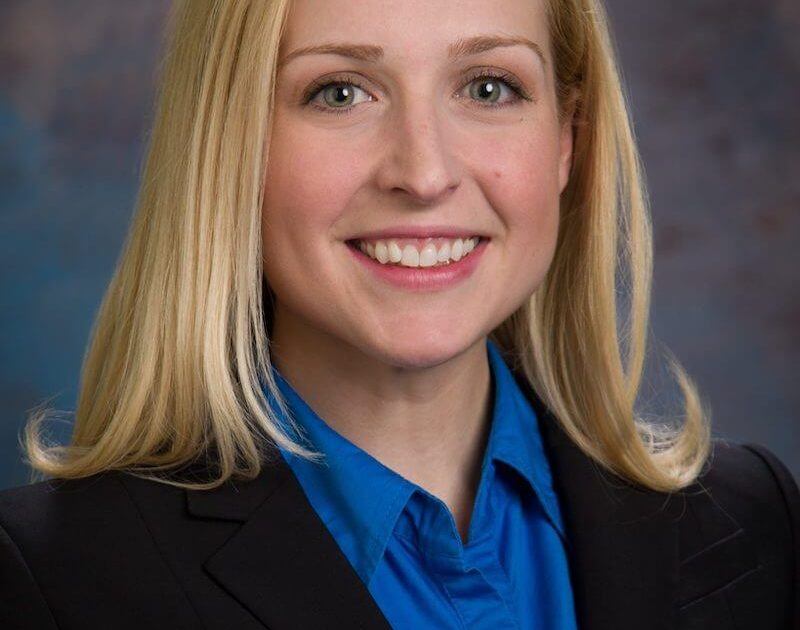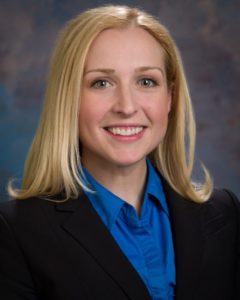
Barrow Recognized for Care in Traumatic Brain Injury, Spinal Cord Injury
In 2015, Barrow became the first acute care hospital in the country to earn both certifications from the Joint Commission—an independent, nonprofit organization that accredits and certifies health care organizations and programs in the United States.
To become certified for another two years, Barrow underwent rigorous onsite inspection in which the Joint Commission evaluated the Neurotrauma Program across the continuum of care. The inspection focused on the program’s compliance with consensus-based national standards, its use of evidence-based guidelines in patient care, and its approach to measuring performance and improvement.
“It’s a testament to the high standard of care that we provide here at Barrow and the high standard of care we expect not just from our physicians but our nursing and rehabilitation staff as well,” said Dr. Laura Snyder, a neurosurgeon and the director of the Neurotrauma Program. “We work really hard here to provide excellent care in traumatic brain injury as well as spinal cord injury, and that requires a large group of people who are experts in their fields. That includes the trauma surgeons, neurosurgeons, nursing staff, and rehabilitation staff.”

Barrow Neurosurgeon, Director of Neurotrauma
Dr. Snyder said having a variety of experts who can provide care for neurotrauma patients in a team manner from the emergency department all the way through neuro-rehabilitation is what makes the Neurotrauma Program at Barrow unique.
“There are not many hospitals that have that full continuum of care and support not only for the patients but for the patients’ families,” she said. “Once someone has suffered a traumatic brain injury or spinal cord injury, finding a new normal is a long-term process.”
Barrow was the first American College of Surgeons (ACS)-verified Level 1 Trauma Center in Arizona and sees about 1,000 traumatic brain injury and spinal cord injury patients per year.
“We receive some of the sickest patients in the Valley and the state because we’re comfortable taking care of those complex patients, and we’ve had so much experience with trauma patients that we can provide good outcomes,” Dr. Snyder said.
Neurotrauma Program Coordinator and neuroscience nurse Gary Smith also highlighted the neurotrauma facilities at Barrow, which include six dedicated trauma bays, 11 dedicated neurosurgery operating rooms, 64 neuro-intensive care beds, and 52 neuro-rehabilitation beds.
“It’s not a matter of waving a flag,” Smith said of the certifications. “It’s to say that if you have one of these conditions, this is the best place to be.”
Dr. Snyder said the program is providing more education and training in neurotrauma to the nursing staff and incoming residents, and it has also increased its outreach efforts to educate first responders and the public.
It’s not a matter of waving a flag. It’s to say that if you have one of these conditions, this is the best place to be.
-Neurotrauma Program Coordinator Gary Smith, BSN, CNRN
Barrow hosts symposiums in traumatic brain injury and spinal cord injury and offers support groups for both injuries. The Barrow Concussion and Brain Injury Center is leading the nation in traumatic brain injury education and prevention, with programs like Barrow Brainbook for high school athletes and the Barrow Concussion Network for athletic trainers.
“We’re really trying to reach out with the community and make sure people know about trauma, how to prevent it, and how to treat it,” Dr. Snyder said.
The neurotrauma team is already focused on the next certification process. Smith said the team is evaluating how to better monitor quality of care and reviewing patient satisfaction to see how the program can better serve patients with traumatic injuries.
“Our goal is to continue to provide compassionate care for this group of patients, who are very susceptible to complications in the acute period, and try to promote the best outcomes for those patients both while they’re in the hospital and after they go home,” Dr. Snyder said. “I think that will require that we continue to do research and look at our outcomes and that we continue to follow the latest in technology and in neurotrauma care.”
